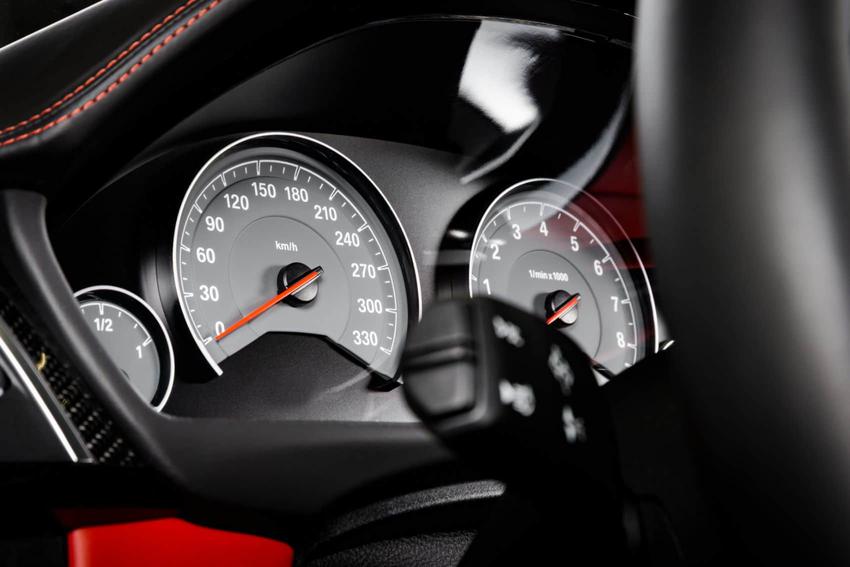Odometer fraud explanation and 6 proven ways to protect yourself
Is odometer rollback fraud still a problem today? After all, vehicles are now more technologically advanced and can record mileage digitally. This comprehensive guide will clarify odometer rollback fraud, including how common it is and what steps you can take to protect yourself when buying a used car.
What Is Odometer Rollback Fraud?
How Common Is Odometer Tampering?
Is Odometer Rollback Legal?
How To Check For Odometer Rollback
Protect Yourself From Odometer Rollback
#1: Check For Suspiciously Low Odometer Readings
#2: Ask For The Original Title
#3: Run a Vehicle History Check
#4: Check The Dashboard For Signs of Tampering
#5: Consult a Trusted Mechanic
#6: Check The Control Module
If You Experience Odometer Rollback Fraud
What Is Odometer Rollback Fraud?
Also known as “busting miles,” odometer rollback is the act of tampering with a vehicle that results in a mileage reading lower than what it has actually traveled. The primary motivation for odometer rollback and tampering is to increase the sale price of a used car.
Odometer rollback fraud has been a problem ever since manufacturers started placing odometers in their cars. Back in the day, when manufacturers made cars with mechanical odometers, rolling back meant manually changing the number on the device and fitting it back into the dashboard.
The world has gone digital, and cars are no longer using mechanical odometers; nearly all modern cars record mileage electronically now. Unfortunately, scammers have gone digital as well. Instead of manually rolling back the vehicle’s odometer, they tamper with the software. So, despite many advances in technology, this deceitful practice still continues.
The impact of odometer rollback fraud is not cheap either, as the National Highway Traffic Safety Administration (NHTSA) estimates it results in $1.05 billion in losses every year in the United States alone.
How Common Is Odometer Tampering?
According to this NHTSA study (PDF), approximately 452,000 used cars with false odometer readings are sold each year, or 3.47 percent of all used vehicles sold. This means that if you plan to buy a used car, there is around a one in 29 chance you could experience odometer rollback fraud.
Is Odometer Rollback Legal?
Many government agencies have been fighting against odometer rollback and tampering for decades. As of now, odometer fraud is illegal both on the federal and state level. No matter if it is an individual selling a car or a dealership, they are obligated to inform the buyer with a written document about the mileage of the car and any fixes/changes that have been made on the odometer.
If caught rolling back the odometer, the scammer can face a criminal charge. The buyer can also sue the scammer and demand remedies. The remedy amount is either the difference between the price paid and the actual car price or $1,500, depending on whichever is more.
Although vehicles today are more technologically advanced, odometer rollback fraud can still happen.
How To Check For Odometer Rollback
If the vehicle has a mechanical odometer, changing mileage would mean taking the instrument off the dashboard, sometimes even disassembling it, and rolling the digit gears back. This is easily detected, as there can be many visual tampering signs.
For the digital odometers, the process is vastly different. It usually involves connecting to the car via a diagnostic port, getting access to the odometer software, and altering the software and its stored data. Sadly, digital tools that allow for altering odometer readings are not hard to find. Some of them are professional tools used by licensed repair shops for legitimate reasons. Still, you can find amateur ones for as low as $50 online.
Protect Yourself From Odometer Rollback
We have compiled a list of six proven methods that can help you avoid buying a vehicle with a rolled-back odometer.

#1: Check For Suspiciously Low Odometer Readings
If your future car’s previous owners are average drivers, they will log approximately 13,500 miles each year. Make sure the model year and odometer make sense compared to one another. For example, if the car is seven years old and the odometer reading is 20,000 miles – much lower than the expected 94,500 average, it can be a red flag. Make sure your seller has a reasonable explanation for it.
Note: These numbers vary per age group, gender, and region. The DOT has an updated chart here that shows the stats.
#2: Ask For The Origi
nal TitleThe odometer reading is also fixed in the vehicle title. To hide the car’s real mileage, other than altering the odometer, scammers might also falsify the vehicle title.
When buying a car, if your seller is reluctant to show you its title, that could be a red flag. Make sure you insist on seeing the original document before agreeing to a purchase. Considering that you might be given an altered or fraudulent title, pay close attention to the document’s odometer reading. Check if the text is crisply printed on a clean background or if it looks smudged and hard to read.
#3: Run a Vehicle History Check
A Vehicle History Report is a document that lists a variety of useful information about the car’s past. It includes everything from information about the car’s previous owners, its accident history, repair history with details, changes with the title, and more. Every time the car undergoes inspection or repair by certified companies, that information is added to this report, including the odometer reading at the time of the repair or inspection.
When checking the Vehicle History Report, pay attention to:
The final odometer reading. Does it make sense? Does it match the reading on the dash?
The inspections and odometer readings on those dates. If there was a gap of one year between two different inspections, and the odometer reading has changed much less than the average 12,000 miles, ask the vehicle seller for an explanation.
Getting this report is relatively easy. You will need to use the VIN of the car – a unique identifying number found in car documents and physically on the vehicle itself. Next, you can use that number to run a VIN check online.
Unlike the vehicle title that can be altered physically, the Vehicle History Report is an electronic document kept in secure databases that are highly complicated to break into, making it one of the most reliable ways to check for odometer rollback.
#4: Check The Dashboard For Signs of Tampering
If you are buying an older model with a mechanical odometer, pay attention to the physical clues around the dashboard. Here are three tips to follow:
Check if there are any scratches and signs of disassembly on the dashboard and the odometer itself.
Check if the instrument panel parts are not fitting correctly and look for any parts or screws that might be missing.
Take a look at the odometer itself. Do the numbers look misaligned or hard to read? If yes, that is also a red flag.
Before you purchase a vehicle with a mechanical odometer, look for any scratches or scuffs around the odometer itself. That could be a sign the odometer has been tampered with.
#5: Consult a Trusted Mechanic
If you suspect that the mileage is not genuine, ask a professional mechanic to check the car’s internals.
Each part of a car has a life expectancy in terms of miles driven. Some parts are expected to be changed after 60,000 miles, while others can last for 100,000 miles or more. If your mechanic has found components replaced much earlier than expected, that could be another hint that the vehicle has been used more than advertised.
Also, the wear and tear of the parts themselves can give you clues on the approximate mileage. If you are told that your car was driven 40,000 miles, but some parts are more timeworn than they should be, that is another sign.
#6: Check The Control Module
When rolling back the vehicle’s odometer, scammers may forget about the vehicle control module, but mileage is recorded on both devices. The control module is independent of the odometer. Altering one does not necessarily impact the other. One of the sure solutions to detect odometer fraud is checking the control module and comparing it with the odometer.
Just ask a mechanic to take the data off the module and compare the mileage. If you want to know how to detect fraud in the control module yourself, it does not take much tech-savviness. There is a standard diagnostic port in your car called the OBD2 port, and you can easily find OBD2 scanners online.
If You Experience Odometer Rollback Fraud
If you have experienced odometer rollback fraud, you should immediately report it to NHTSA. You can find the contact information for the Office of Odometer Fraud Investigation for your state here.
Patrick Peterson is the author/editor of AutoDetective. He was born and raised in the automotive world and is a passionate writer who has created beautiful content about all related content about cars and bicycles.
-
Latest
 Is Subaru's extended warranty worth it? (2021)
Is Subaru's extended warranty worth it? (2021)The manufacturer offers two Subaru extended warranty plans.These plans are called Added Security, and they can provide up to 10 years of coverage.Subaru drivers can also choose from a range of third-p...
-
Next
 Hybrid car face-off: Kia Optima and Toyota Camry
Hybrid car face-off: Kia Optima and Toyota CamryHybrid technology will continue to exist. Although it is not a new technology on the road, it is only recently that vehicles have begun to appear more styling than their early predecessors. Recently,...
Popular Articles
- The Canadian government invests in the first Canadian-made electric car
- Stellantis strengthens electrification
- 2022 Ford Maverick debuts
- The Canadian government requires 100% of Canadian car and bus sales to achieve zero emissions by 2035
- Extend electric car rebates to businesses and non-profit organizations BC
- New general manager of ADESA offices in the U.S. and Canada
